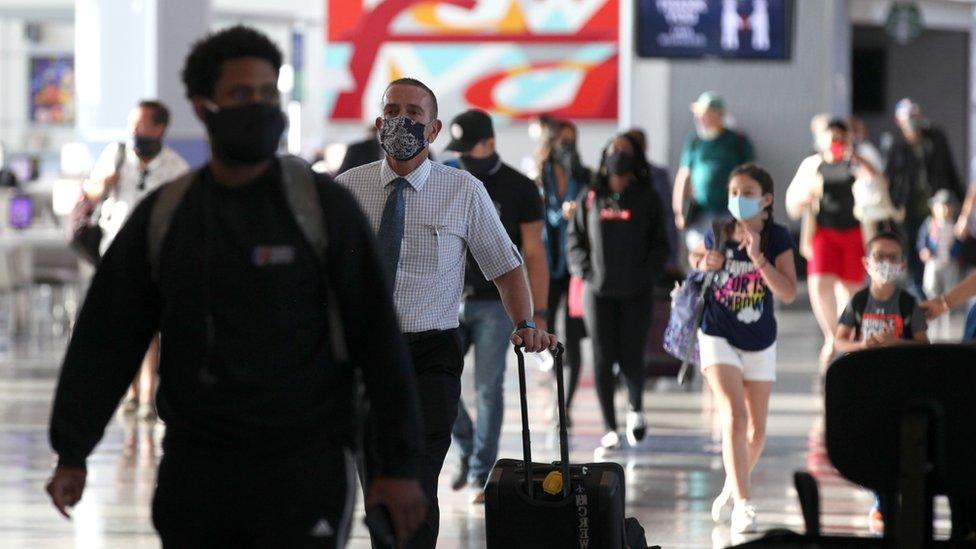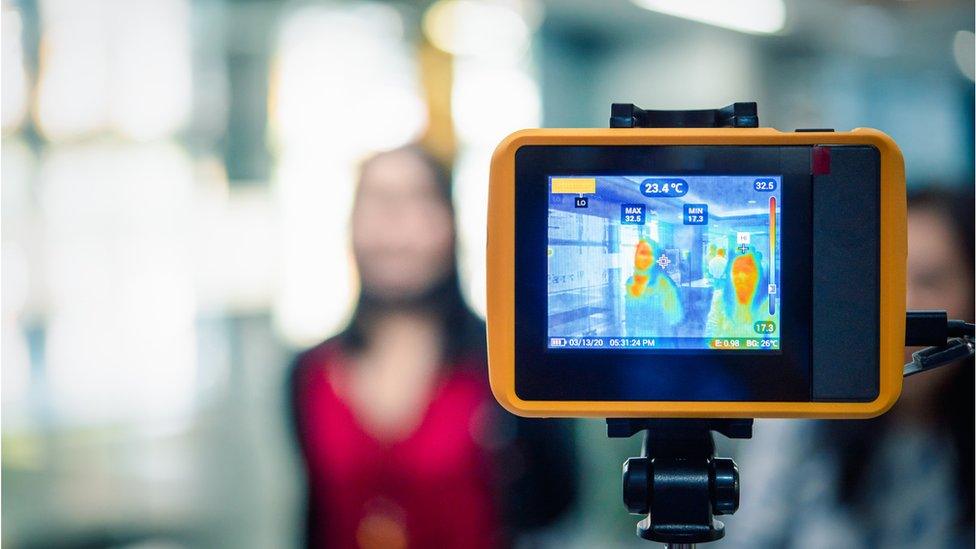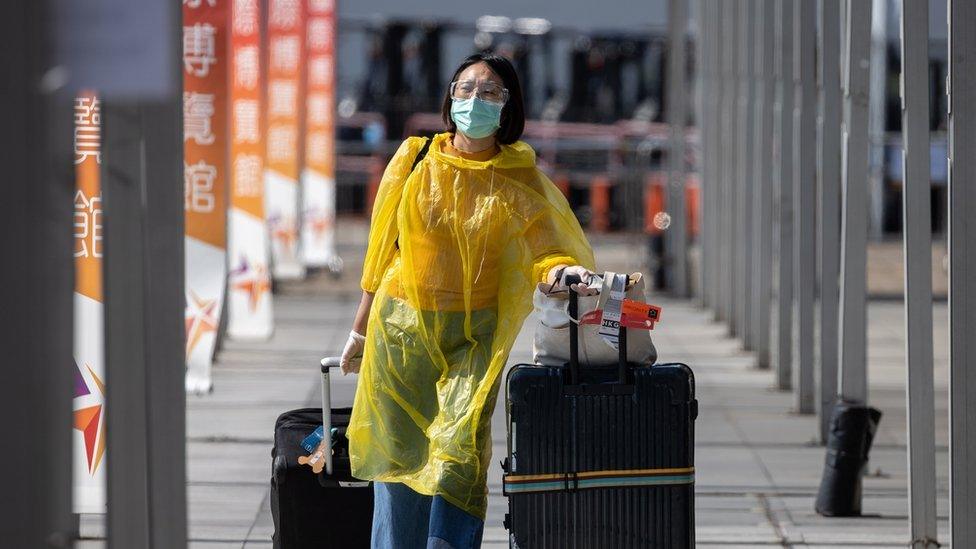Coronavirus: How air passengers can stay safe
- Published

The guidance looks at how passengers and staff can stay safe while travelling
Thermal-imaging cameras and swab tests for coronavirus are not "clinically valuable" in airports, according to a panel of aviation health experts.
About one in every three infectious people would be missed, they say.
Air systems and low humidity on planes already reduces virus spread through the cabin.
But passengers should wear face coverings at all times, board and disembark one row at a time and be seated apart from others if possible.
And those seated at the back should be the first on and last off.
The recommendations for safe air travel have been sent to the UK aviation industry and the Department for Transport.
It comes as the UK introduces a two-week quarantine period for anyone arriving from abroad by plane, train or ferry, although there are some exceptions.
However, more than 200 travel companies have asked for the new rules to be scrapped and some MPs have voiced concerns.
Temperature screening detects anyone with a high temperature, and so has "substantial high false positive rate" for coronavirus, causing hold-ups for many passengers, the document says.
And throat swab tests, which could be introduced for potentially infected passengers, have "a false negative rate of up to 30%".

Thermal cameras have been set up in a number of airports in the UK
Prof Ashley Woodcock, from the University of Manchester, who led the panel, said air filtration systems in planes were very efficient and filtered out 99.8% of small particles.
"The air in planes is about as clean as an operating theatre," he said.
The panel recommends passengers to:
use alcohol hand sanitisers frequently
wear face masks or coverings at all times
stay 2m (6ft) away from other people and their baggage, where possible
On board, there should also be 'sequencing' of toilet visits - with people asking permission to go from cabin crew - and a spare supply of face coverings, it adds.
Passengers with a long-standing cough caused by asthma, COPD or other respiratory disorders should consider wearing a coloured mask to highlight their underlying condition.
In airports, shops and restaurants should be opened but managed carefully to avoid overcrowding.

FACE MASKS: When should you wear one?
TESTING: Who can get a test and how?
GLOBAL SPREAD: Tracking the pandemic
SOCIAL DISTANCING: The rules as they are now
EUROPE LOCKDOWN: How is it being lifted?
TWO METRES: Could less than 2m work?

- Published26 June 2020
